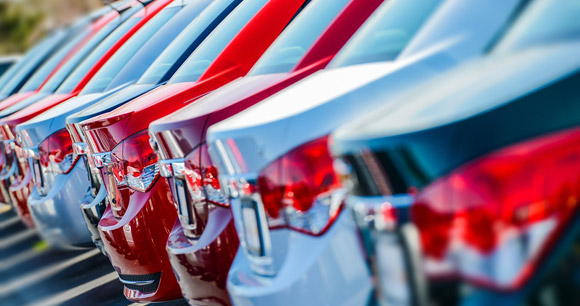What to consider when choosing your fleet cars
26/11/2014 00:00:00by Mark McKenna26/11/2014 00:00:00What to consider when choosing your fleet carsBluedrop Services

Fleet insurance
Fleet insurance costs will partly be determined by the make, model, age, and engine size of the fleet cars that you choose to implement within your fleet. This is one of the important costs that should be considered before blindly purchasing your fleet cars, as fleet insurance for all of your vehicles is mandatory. A few wrong choices and you could be paying over your expectations in insurance premiums. It is wise to take time to consider how to shop for your commercial fleet insurance.
To help in understanding the nature of fleet insurance and what elements you need to consider it is always recommended to contact a specialist fleet insurance broker who can advise you in this area.

Buying, hiring or leasing fleet cars?
Your choice of funding method for fleet cars may ultimately be driven by cash flow, tax, VAT and the transfer of risk, however it is recommended to regularly examine all of the options to ensure you are adopting the most efficient system for your business. Each of these options as well as grey fleet and pool-car solutions warrant careful consideration and may be right for your business at different points in the business lifecycle so don’t just stick with what you have always done.
Rental is becoming an increasingly attractive option to most businesses during a period of economic downturn and need to cut costs. This option may be more suitable where fleet cars are used more sporadically for business trips and meetings.
Leasing your vehicles provides more transparency on the total life cost of your fleet and frees up cash and administration time which can then be available for the business. By leasing your fleet cars you can also have peace of mind over maintenance of the vehicles and a regular renewal on the make and model. Depending on the type of lease you can also gain tax benefits from an operating lease or claim depreciation from a capital lease.
When buying and selling there are potential savings that can be made by renegotiating and reconsidering the manufacturers that you work with. One of the most important considerations will be the resale value of your fleet cars and balancing the choice of a vehicle that employees are happy with against the disposal value. But you should also be in discussions with manufacturers to negotiate further discounts where possible. One off batch deals can be possible with larger fleets and taking advantage of special offers that are available can mean huge savings.
Grey fleets are classed as those where employees drive their own vehicles for business purposes. They are generally more beneficial to businesses where employees do not need to travel long distances. However, they bring a lot of issues to manage including making sure they are covered with insurance for business use, accident management, duty of care, vehicle maintenance and accurate mileage reporting.
Fleet cycles
A common form of lowering costs on fleet cars is to extend the use of a leased vehicle. In most cases businesses adopt a 3 year replacement cycle, but why not consider 4 years and make considerable savings on monthly lease rates?
As most employees prefer to drive new vehicles perhaps you can trade back some of the savings by offering an improved model when renewal is due.
Choice of vehicle
Consider vehicles with lower CO₂ emissions and MPG consumption. Lowering CO₂ figures to below 160g/km and MPG below 45mpg could provide significant savings in fuel, National Insurance and Benefit in Kind taxation. Strong arguments towards environmental benefits and cost savings on fleet cars can be considered by capping these levels.
It is important to understand the tax breaks for fleet cars and how vehicles with lower emissions will provide the best savings. Understanding how the tax regime is set to change can also help to future-proof your vehicle choices by understanding how they will be affected during their fleet life.
Government targets are set for an overall fleet average of 130g/km of CO₂ emissions by 2015, and this will require a stricter list of vehicle choices and may mean looking beyond petrol and diesel to established hybrid models. Not only will low carbon emitting vehicles save on tax, but they also tend to have lower fleet insurance costs due to reduced risk.
By removing a choice of vehicle across the business completely you can potentially make huge savings. This would mean providing a potentially better car through increased buying power, however, you will need to consider recruitment retention and how this may be affected.
Return to blog menuWant to find out more about Bluedrop's fleet insurance?
Call our friendly team now for the right insurance cover - at the best price
+441489780491
Calls recorded for training and quality.



 Privacy and Cookie Policy
Privacy and Cookie Policy